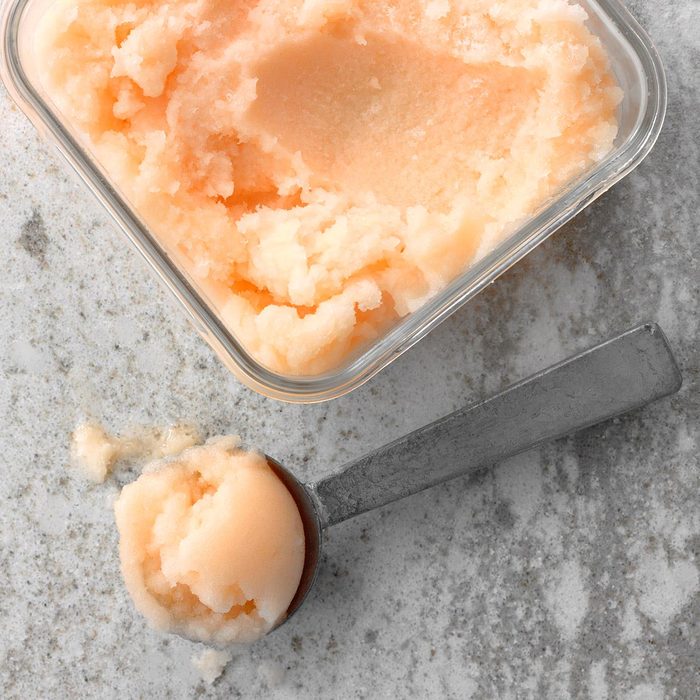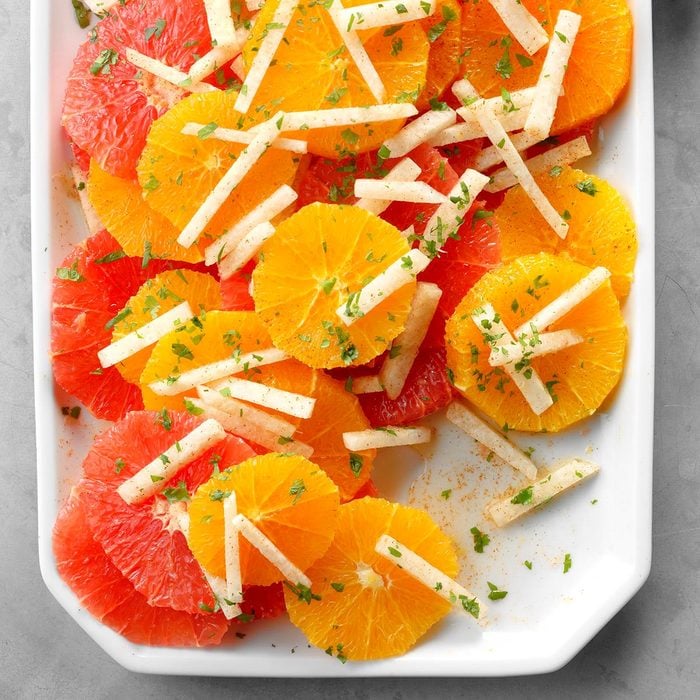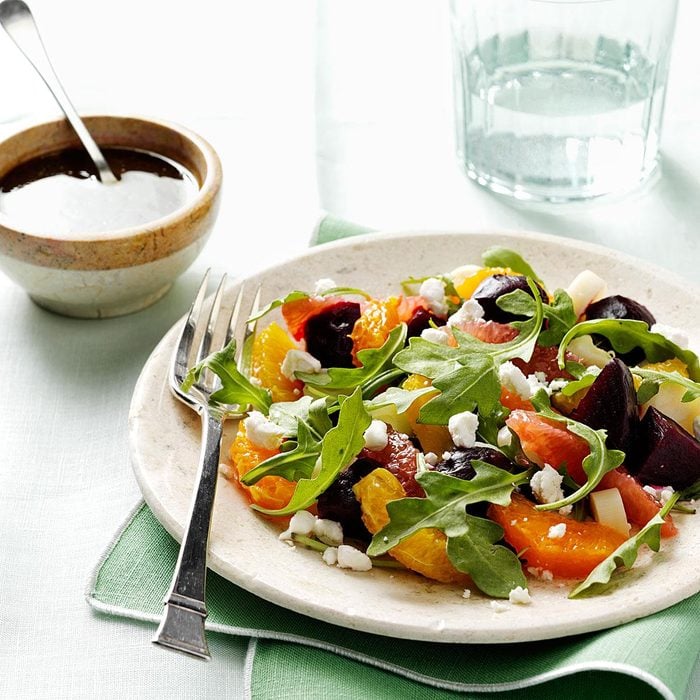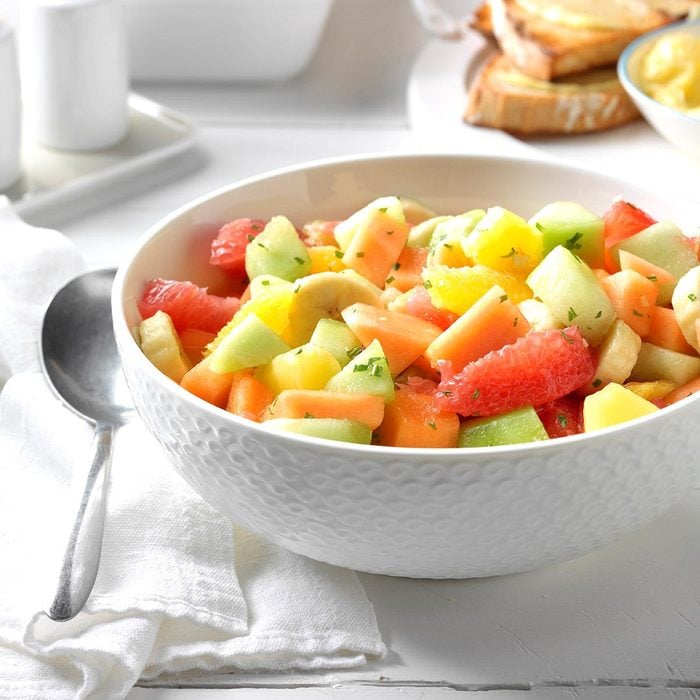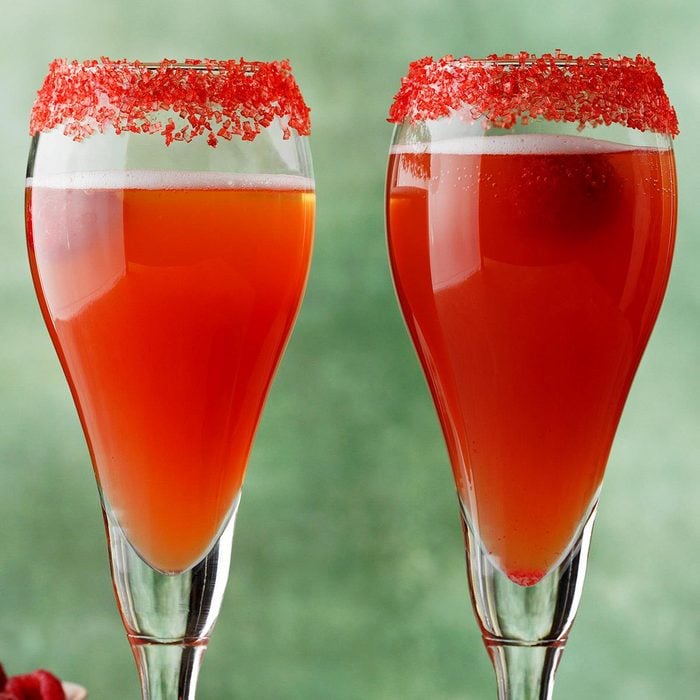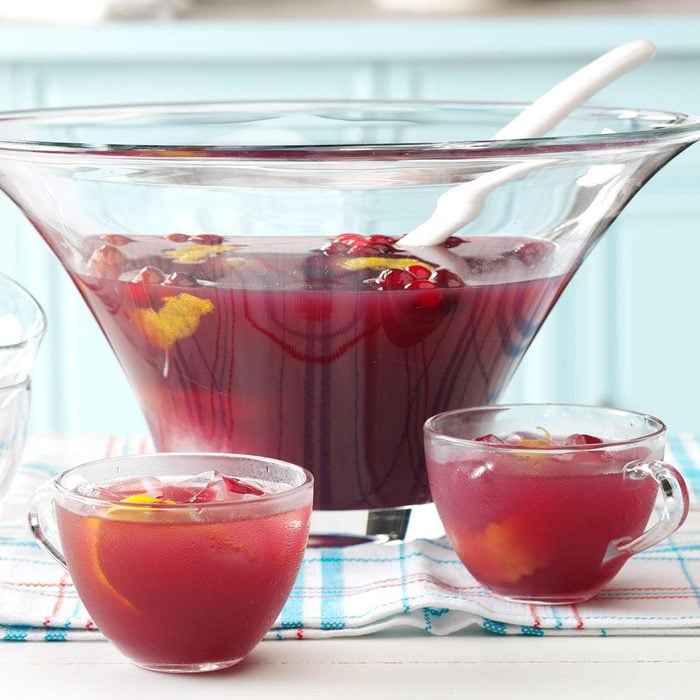What is a Pomelo Fruit?
Updated: Nov. 17, 2023

Pomelos are the newest star of the citrus scene—but they're actually one of the oldest citrus fruits. Find out more about this fascinating fruit!
If you hadn’t seen one before, you’d be forgiven for thinking a pomelo was just a big grapefruit. A very big grapefruit. Like someone had taken a grapefruit and inflated it until it was about the size of a volleyball. Or a bowling ball. Or some other piece of sports-related equipment. Pomelos look very much like grapefruit, with the same green-yellow, slightly bumpy rind and round to slightly pear-shape, but they’re much bigger, with the smallest being the size of a cantaloupe.
Pomelos are actually one of the oldest citrus fruits. In fact, we owe most of the citrus we enjoy today to the pomelo. They’re what are called “ancestor fruits,” along with the mandarin and the lemon. These three, cross-pollinated and cross-bred, are the foundation of practically all citrus in stores today. For example: Pomelos crossed with mandarins gave us oranges. Pomelos then crossed with oranges gave us grapefruit.
These jumbo-sized fruits go by many names, including Chinese grapefruit (they’re considered to be a lucky food for your Chinese New Year party), shaddock (after an English sea captain who was purportedly the Johnny Appleseed of pomelo fruit) and jambola. Native to southeastern Asia and Malaysia, pomelos have been grown in China, Thailand, Japan, India, Taiwan, Tahiti and New Guinea. Citrus growers in California, Florida, Arizona and Texas have started producing pomelos, too, giving them a foothold in the United States.
What does a pomelo fruit taste like?
The flavor of a pomelo is very much like a grapefruit—but sweeter. If you’ve always thought a grapefruit would be grand if it didn’t make your mouth pucker, the pomelo is for you. The exception to the sweetness is the membrane between the segments; that is very thick and bitter and should be avoided.
Pomelo vs. Grapefruit
The biggest obvious difference between pomelos and grapefruits is the size, but that difference quickly disappears once you peel the pomelo. The pomelo’s rind is much thicker than that of a grapefruit—up to an inch or more. Once the peel is gone, the size difference is mostly gone, too, and the pomelo is about the same size as a grapefruit. Like a grapefruit, the flesh of the pomelo can be either yellow or pink. The flavor difference remains, however. Pomelos can be used in cooked recipes like grapefruits, but also can be eaten fresh without needing to be doctored with honey or sugar.
When choosing your pomelo, use the same rule of thumb as grapefruit—look for fruit that is firm instead of soft and shiny rather than dull. If you can’t find pomelos at your supermarket, try an Asian foods market when pomelos are in season (November through March). By the way, do you have a grapefruit spoon?
What are the benefits of eating pomelos?
Like other citrus, pomelos are a great source of vitamins, potassium and fiber; a single pomelo provides more than the recommended daily intake of Vitamin C. They’re low in calories and high in antioxidants…and with no sodium, fat or cholesterol along for the ride, a pomelo makes a healthy breakfast, snack or dessert.
How do you eat a pomelo fruit?
When it comes to eating pomelos, practically anything goes—use them any way you’d use more familiar citrus. Because of their sweeter flavor, they’re a pinch-hitter; they can easily sub for either grapefruits or oranges in recipes that call for either. However, if you’re doing a straight swap of pomelos for grapefruit, take a look at your recipe to see what’s being added as a sweetener. If a grapefruit recipe calls for sugar or honey, you can reduce the amount if you’re using pomelos instead.
If you’re using the pomelos fresh, definitely peel the membranes around the individual segments; these membranes are thick and bitter, and will make you question the whole, “sweeter than grapefruit” description. The quickest and easiest way to use a fresh pomelo—say, in a Citrus Avocado Salad—is to segment, or “supreme” it:
- Cut a thin slice from the top and bottom of each fruit; stand fruit upright on a cutting board. With a knife, cut off peel and outer membrane.
- Cut along the membrane of each segment to remove fruit.
With the exception of the membrane, everything else is usable. Use the flesh fresh in salads and salsas (like this Tangy Texas Salsa), or cooked. Use the juice in drinks—both with alcohol and without—and marinades. Use the zest as a quick flavor booster tossed with roasted veggies or in baked goods. Use the peel candied as a sweet treat or garnish, or in jams and marmalades. And if you’ve ever made a homemade limoncello—or a variation with grapefruit—you’ll grasp the appeal of a pomelo. The vast surface area of a pomelo might not reflect the size of the flesh within, but oh, all that zest! Instead of requiring 10 lemons or 4-5 grapefruit, just one pomelo might do the job.
To get started, try using one of these great grapefruit recipes as a launch point…and remember you can cut back on the sugar!



